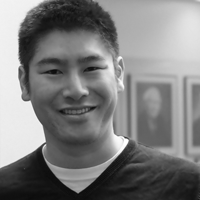Engagement | Victor Lee
"When you have that heightened attention, you’re noticing more, and you’re ready to respond more to what’s going on. We can get signals about heightened arousal using some of the new wearable technologies that are available.”

2018 Interview Highlights:
What is your working definition of “engagement”?
There are a lot of fairly precise ways that people talk about engagement, but there isn’t really a consensus about what it means. In the work that I’m doing I’m making an appeal to sit up and pay attention and take notice of your feelings. When you have that heightened attention, you’re noticing more, and you’re ready to respond more to what’s going on. We can get signals about heightened arousal using some of the new wearable technologies that are available. That’s generally how I’ve been looking at it.
How are you measuring and assessing engagement in your work, and what are some of the tradeoffs of that approach?
We’re using wearable devices, which are wristbands similar to a smart watch or a Fitbit device. They measure how much electricity your skin can conduct at any given moment. It turns out that there is a pretty strong correlation between more skin conductivity (and spikes in skin conductivity) when you have heightened arousal. That relates to our primitive survival instinct that evolved in our brains and our bodies. Using those, we are getting data about four times every second about skin conductivity, and we’re coupling that with wearable cameras so that we can see what these youths who are in these informal learning environments are seeing and encountering. Our goal is to figure out what sorts of things lead to these natural spikes and make them willing to spend more time looking at or investing in and attending to the information. In addition to those data, we have accelerometer data and temperature data. It’s an all-in-one sweep to capture what is more or less arousing across a number of different accepted psychophysiological measures. I think what’s different about this is that for a long time, these technologies were only used in very strict lab settings. Now that we can move freely with wearable devices, we don’t control the stimulus or the environment so much, and we’re starting to see more about the wild learning experience that happens informally. The trick is to figure out how to read that signal. That’s where the wearable cameras come in, as well as a bunch of other triangulation techniques, such as youth self-reports, survey data, and our own video data. We do our best to apply thoughtful analytics and try to pinpoint what activities, experiences, or features are getting most people to stop what they’re doing and want to attend more to what’s happening. A lot of times, what’s key is the social aspect, the opportunity to do things with their peers, to engage with them playfully as they’re working on these activities and projects. That helps them turn the experience into something meaningful where they’re connecting with other individuals as they’re discovering things.
How and why do you think engagement matters for science learning?
I think we’re looking at an attention economy and we’re trying to compete in it. Studying engagement for information learning is largely asking, “Well, what things are getting your attention? What are you willing to invest time in, that finite resource, and look at and process?” If we can harness that, then I think we can best utilize a lot of these other findings about how to best design that information and how to best organize that experience so that the audience gets the most out of it. But I think that linchpin is to first get people to care enough to feel like what we’re showing them is worthy of their attention investment.
What do you see as the big questions for informal science education, science communication, or formal science education for the next five or 10 years regarding engagement?
There are two big questions that we need to consider in science communication and in informal learning. The first one is, how do we as concerned educators and advocates compete in this landscape where attention is a finite resource and there are so many different things competing for people’s attention? I think one of the first steps is figuring out how to get people to pause their scrolling, put down their very fun device, and go to a particular activity where their device is not going to be the dominant interaction feature.
The second question is, how can we as educators find or develop appropriate and accurate bite-size chunks of scientific knowledge or information? We need to be pretty careful about selecting and refining those nuggets, just as a good advertising agency can spend months working on a concept for a 30-second commercial. We haven’t done that kind of design work historically, but I think we should acknowledge that it’s how we’re going to get more traction. If we want people to be as enthusiastic about it as we are, we have to meet them where they are.